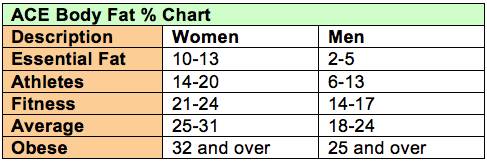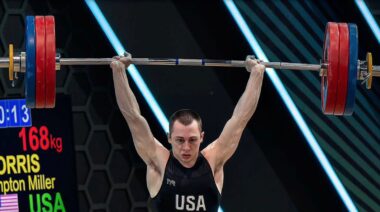As any keen reader of Pulse Beat Fit’s Olympic weightlifting articles has probably figured out by now, I am greatly interested in questions concerning weightlifting anthropometry, namely the ideal height and body composition for the various weight categories.
Recently, my fellow contributor Bob Takano published an interesting piece entitled Strong Is as Strong Does: Your Ideal Weightlifting Weight. In it, he outlined the average height range of international-caliber lifters for both males and females. I will not reproduce the charts illustrating the findings. You can look that up yourself. I will limit my commentary to the interesting things that become obvious when the data is examined.
Category Averages
In the male 56kg category the average athlete’s height was 149cm, while the women’s 53kg was 152.8 and their 59kg category was 154.33. Interpolating would give us about 153cm for a 56kg woman. Therefore, the women’s average height is about 4cm higher than the men’s. Therefore, women are rangier than men, while the body compositions (muscle-fat-bone-viscera ratios) of both are uncertain. Especially the women, as will be seen.
Now, let’s look at the men’s 62 and the women’s 63 categories. The men average out at 156.33cm to the women’s 157.17cm. Not much difference there, especially when the one extra kilo is taken into consideration. The two sexes seem most comparable at this weight.
While other categories differ between men and women, only in the 69kg category do they both share an upper limit. Here the men average 161.75 while women average 158.42. This now has the height differential definitely moving in the opposite direction. The average height advantage of men in the population seems to be expressing itself here.
Finally, we can move to the 77/75kg categories. There the men average 165cm to the women’s 163.26, continuing our trend to shorter women.
“For you non-statistical nerds, this means that women’s heights will vary significantly more than men’s for each category.”
Note: I will not be examining the larger categories due to their non-comparability. We would have to compare the men’s 85, 94, 105, and 105+ categories to the single 75+ supers available to the women. Women will usually display higher fat levels in the 75+ category, while at the same time do not reach the heights the male superheavies typically do. Ditto at the lower end of the scale, since few men can ever weigh 48kg post-puberty.
The General Pouplation And Height
In the general population for any given bodyweight, women tend to be taller. This is due to the greater fat percentage in their body composition and that women are generally less muscular than men. This all works out to women being taller for any particular bodyweight.

However, that only occurs in the general population. With international-caliber lifters, there will be a greater proportion of muscular bodyweight in both sexes. This brings down the average height for an elite lifter of any given bodyweight, male or female. The question remains, though: how much for men and how much for women when both are elite lifters? The answer here is not obvious so it will require more extensive research and analysis.
The Women’s Height Variance
The other obvious trend observable is the greater standard deviation about the mean heights in all female weight categories. For you non-statistical nerds, this means that women’s heights will vary significantly more than men’s for each category. I had always suspected this greater variation in female athletes, but only from an intuitive basis. These figures confirm my suspicions.
Why do women show a greater variance in heights? One reason may be a lack of competitiveness that still remains in women’s weightlifting. Women’s performances are rising all the time, much faster than men’s, but they still do not match men for consistency. The situation reminds me of men’s lifting several decades ago when one or two world-beaters would dominate the Olympics, while everybody else hoped they might get a bronze.
“Women’s performances are rising all the time, much faster than men’s, but they still do not match men for consistency.”
With the current dearth of non-Chinese elite competitors, it is still possible for women of lower or greater-than-average height to be successful even at the highest levels. This is not possible with male lifters since the categories are much more competitive across the board. This all leads to a very narrow range of body heights in order to be successful. But women still have some leeway statistically, for now at least.
The Factor of Body Comp
Closely related to that factor is that of body composition. Male weightlifters, outside of the superheavy category, generally have to be at about ten to twelve percent body fat. Much higher than that and they penalize themselves, while much lower is too difficult to sustain over prolonged periods.
Women, on the other hand, have a considerably higher body-fat percentage than men, even when we’re talking about athletes. Please refer to the following chart prepared by the American Council on Exercise (ACE):

As you can see, women have higher fat percentages at all levels, even among athletes. However, as can be seen at any competition, female lifters in particular have highly variable fat levels, even in lighter categories.
The better lifters may be closer to the fourteen percent level, but many others will be significantly higher. Similarly, those girls who can put on muscle easier will also usually do better, but they may also have more fat. This complicates the analysis, making generalization and recommendations difficult until more data is known.
Long-Term Effects
It will be interesting to see how these figures hold up in the years to come as more and more women are lifting and their standards rise. In a more competitive environment, one would expect the ideal heights for female lifters to stabilize and to display lower standard deviations.
“In a more competitive environment, one would expect the ideal heights for female lifters to stabilize and to display lower standard deviations.”
One thing that would be useful is for the published weightlifting results to also include the athletes’ heights in addition to their other information (birthdates, bodyweights, performances, etc.). This would provide useful information for those of us who want to compare performances to try to determine what the ideal height is for the various categories. World championships could be tracked over the years to see what trends are taking place, and the analysis would probably go a long way in explaining any differential between the sexes and their various sizes.
More on weightlifting:
- How to Brace and Breathe Properly For Weightlifting
- 4 Ways to Develop Willpower For Weightlifting
- Hitting Bottom: 3 Tools to Improve Your Olympic Lifts
- What’s New On Pulse Beat Fit Today
Photo 1 courtesy of Senior Airman Daniel Phelps, via Wikimedia Commons.
Photo 2 courtesy of Shutterstock.






